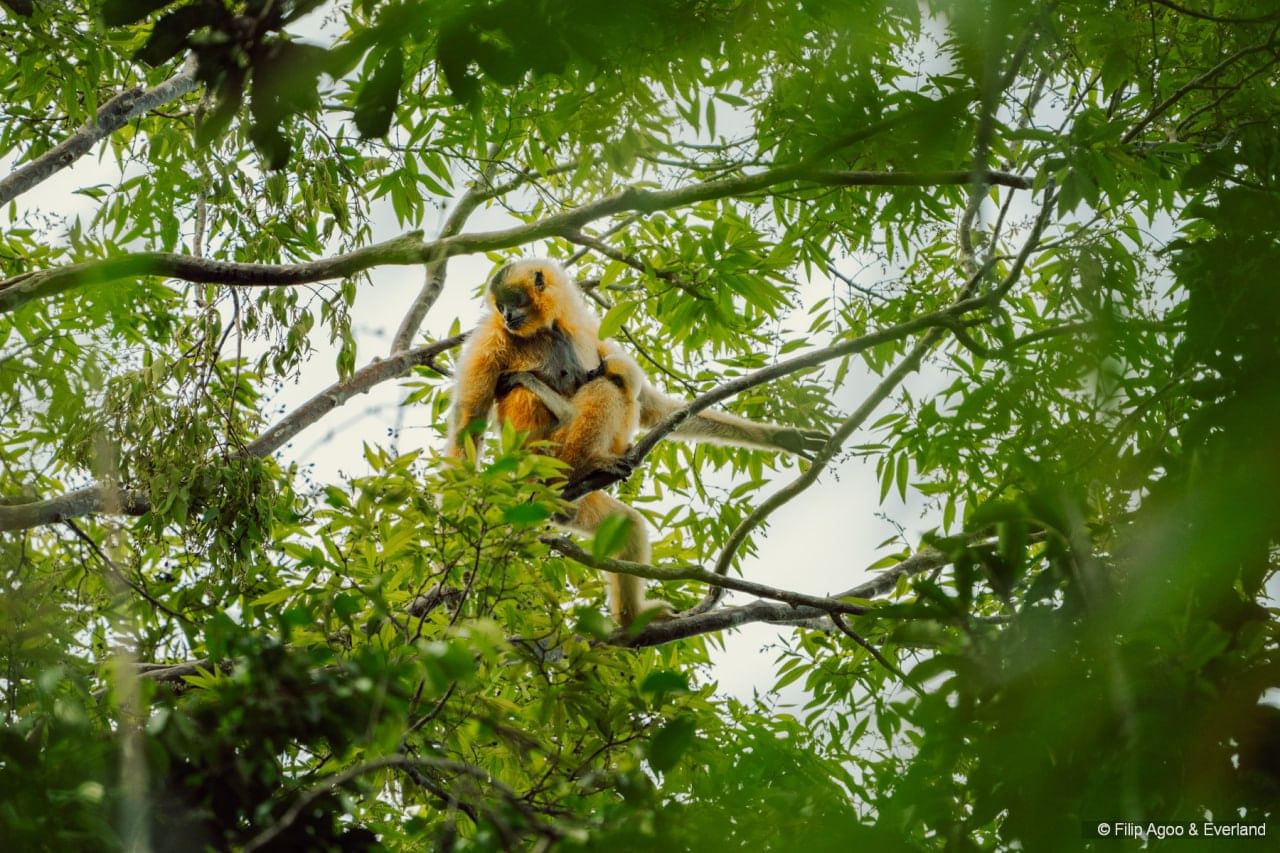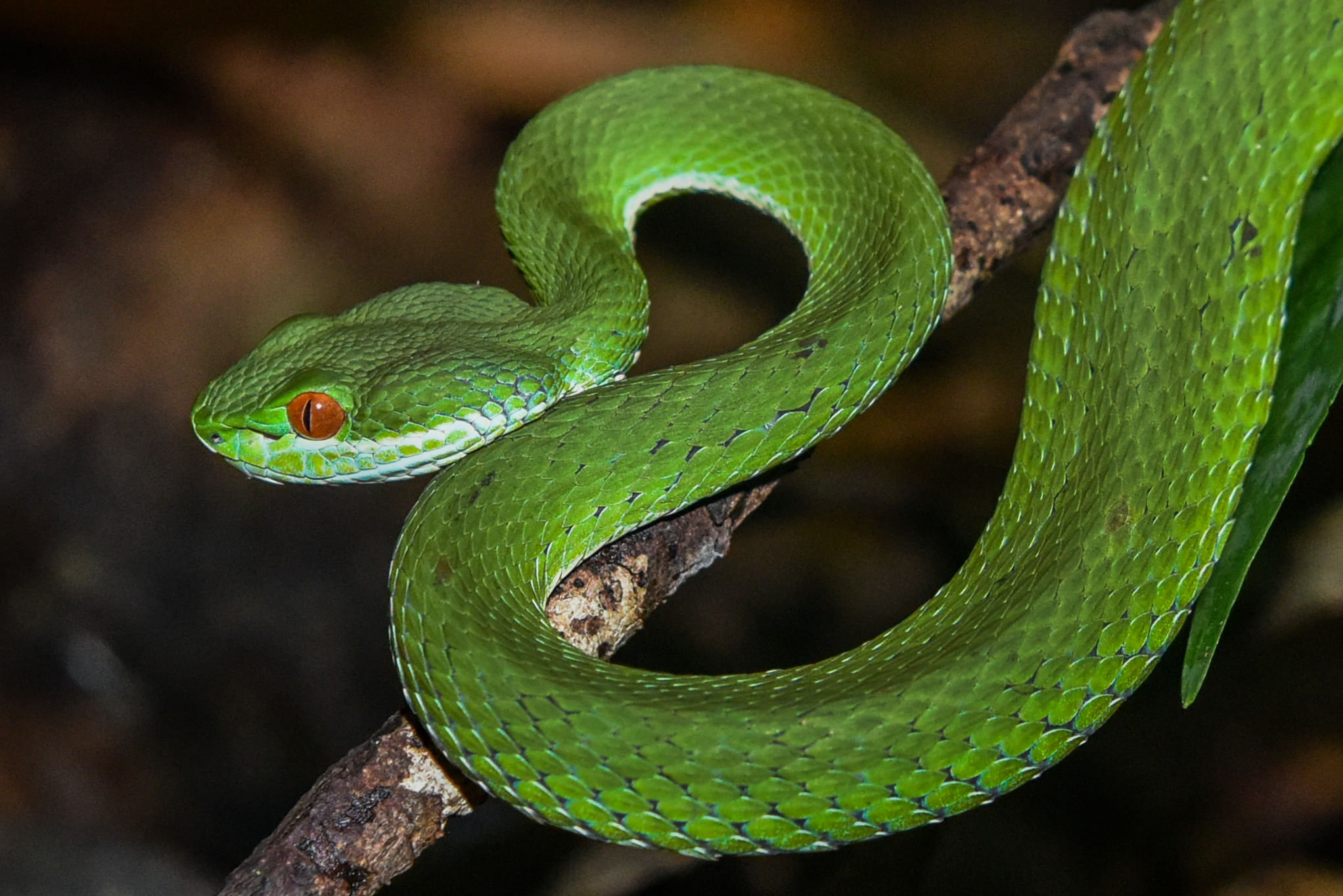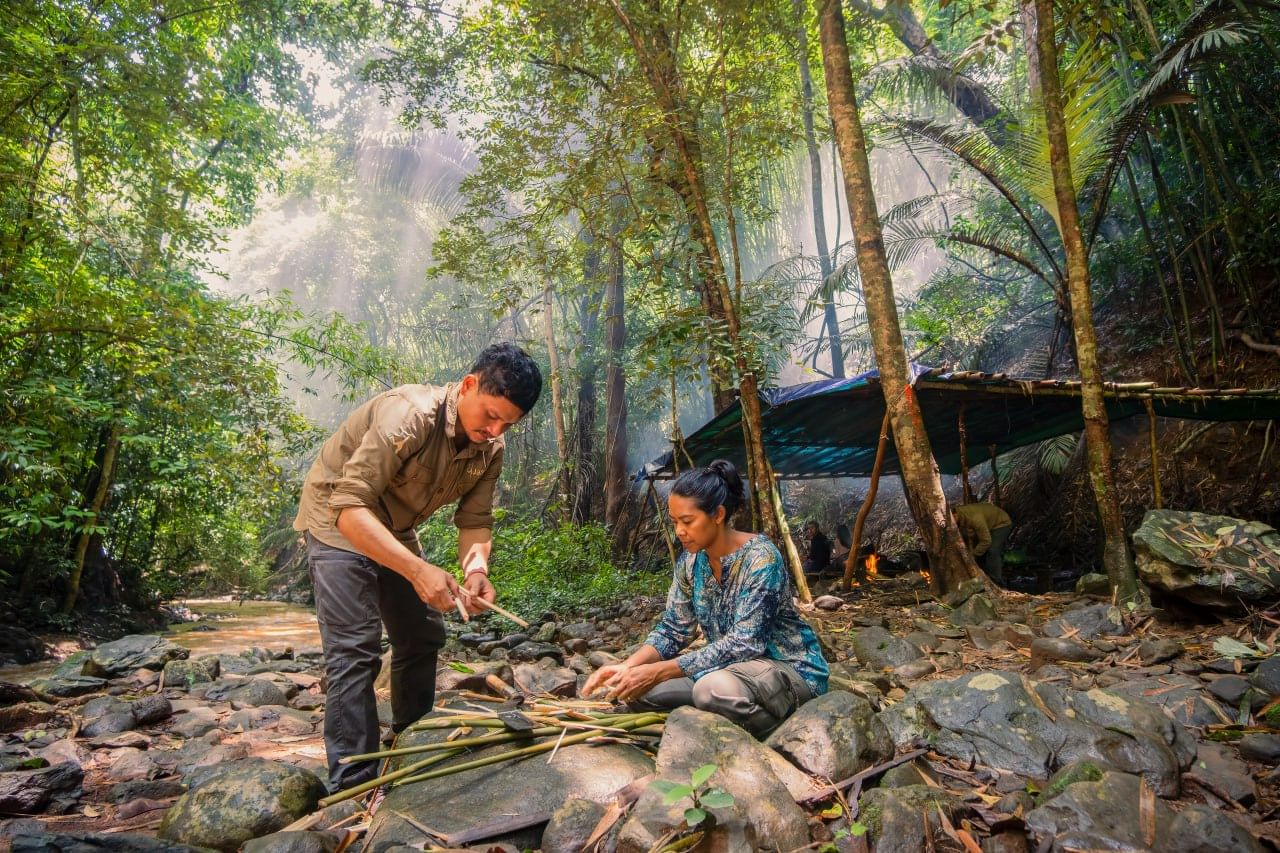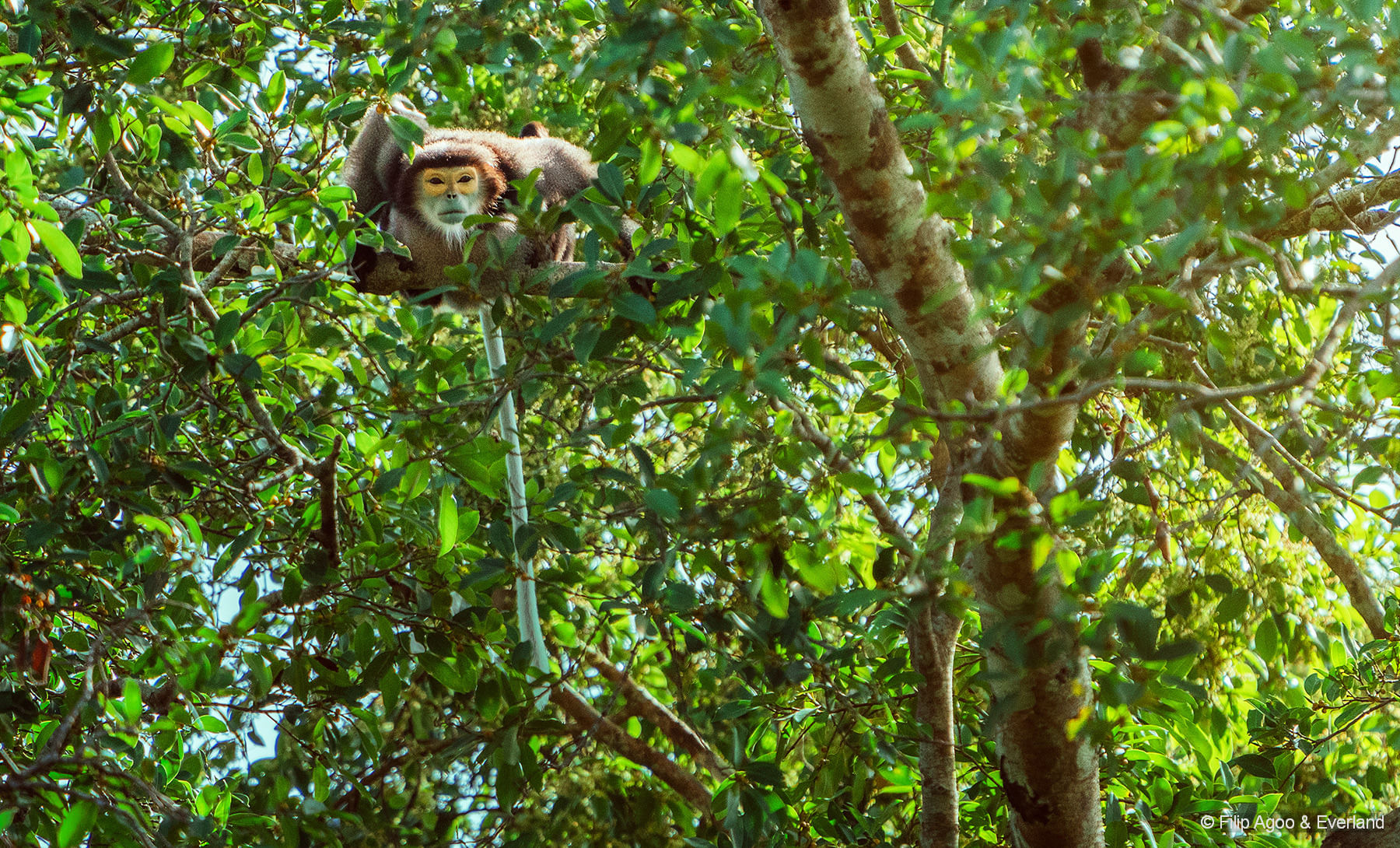Discover Jahoo
Not in a rush? Trust our guides as they take you on a 3-day journey to uncover some of Cambodia's most elusive wildlife
Tour Highlights
Deep in the heart of Keo Seima Wildlife Sanctuary lies an adventure unlike any other, one that will awaken your senses and plunge you into the pulse of the untamed jungle. This three-day expedition takes you through ancient forests teeming with rare and elusive wildlife, from the surreal calls of the southern yellow-cheeked crested gibbons at dawn to the stealthy movements of under the sunda colugo cover of darkness. Guided by expert Bunong trackers, you will navigate dense canopies, uncover hidden waterfalls, and immerse yourself in the traditions of an indigenous culture that has lived in harmony with the wild for generations.
Your journey begins at sunrise in Krong Saen Monourom before venturing deep into the rainforest, where the jungle quickly envelops you in its towering trees and symphony of bird calls. A morning hike offers thrilling encounters with northern pig-tailed macaques crashing through the branches and the vibrant hues of green peafowl darting across the forest floor. A jungle lunch beside a rushing stream provides a moment of respite before the afternoon’s wildlife tracking begins, following signs of elusive creatures like the black-shanked douc langur and the rarely seen clouded monitor lizard. As the sun melts into the horizon, you’ll arrive at the remote Bamboo Camp, where a well-earned dinner awaits before stepping back into the wild for a night walk in search of glowing eyes in the darkness, perhaps a pygmy-slow loris or the flicker of a masked palm civet disappearing into the undergrowth.
On the second day, the forest stirs before dawn, awakening to the eerie, melodic calls of the endangered southern yellow-cheeked crested gibbons. With your guide leading the way, you’ll track these acrobatic primates through the misty canopy, watching them leap effortlessly through the treetops. After breakfast, the adventure escalates with a full-day trek deeper into the sanctuary, where the possibility of spotting rare creatures like the yellow-throated marten or the great hornbill keeps you on high alert. A picnic lunch among ancient trees allows for a brief pause before pressing on, eyes scanning the jungle for signs of the mighty sun bear or the delicate footprints of the leopard cat. As night falls, the sky ignites in brilliant colors while you enjoy a fireside dinner, sharing stories beneath the endless starlit expanse before the warmth of the flames lulls you into the rhythms of the wild.
The final day offers a unique perspective, shifting from exhilarating wildlife encounters to a deeper cultural immersion. After a peaceful morning and breakfast at camp, you’ll trek toward a traditional Bunong village, where rolling hills and sweeping valleys reveal breathtaking vistas of the untouched jungle. Here, you’ll learn about centuries old traditions of the Bunong community and discover their practices, from traditional farming techniques to the use of medicinal plants and sustainable forest harvesting. A hidden waterfall provides a spectacular setting for a refreshing swim and a jungle feast before the afternoon delves into spiritual traditions, sacred rituals, and the craftsmanship of handmade tools and textiles.
As the adventure draws to a close, a final trek back through the forest offers a moment of reflection on the thrill of tracking rare creatures, the wisdom shared by the Bunong people, and the sheer, raw beauty of Keo Seima.
Whether you are a passionate wildlife enthusiast or a traveller seeking a deeper connection with nature, this multi-day trek offers an extraordinary opportunity to witness the magic of Keo Seima.
Tour Packages:
Jahoo Community-led Tour: Experience Jahoo and Keo Seima Wildlife Sanctuary with local Bunong guides. Adventure into the forest spotting wildlife with the help of your local guides unique forest knowledge and skills.
Private Guided Tour - The ultimate wildlife experience: For those seeking an even deeper connection with the forest, a private guided tour ensures a fully personalized adventure. With a dedicated guide by your side, increase your chances of encountering rare species and gaining exclusive insights into the forest’s hidden wonders.
Key Species You May Encounter:
Mammals: Pig-tailed Macaque, Long-tailed Macaque, Southern Yellow-cheeked Crested Gibbon, Black-shanked Douc Langur, Pygmy Slow Loris, Lesser Mouse Deer, Black Giant Squirrel, Cambodian Striped Squirrel, Yellow-throated Marten, Small-toothed Palm Civit, Masked Palm Civit, Sunda Colugo, Leopard Cat, Red Giant Flying Squirrel, Clouded Monitor Lizard (Red Muntjak, Sun bear tracks can be seen)
Birds: Germain’s Peacock-pheasant, Siamese Fireback, Scaly-breasted Partridge, Orange-necked Partridge, Green Peafowl, Great Hornbill, Bar-bellied Pitta, Blue-rumped Pitta, Grey-faced Tit babbler, Grey-eyed Bulbul, Red-vented Barbet, Green-eared Barbet, Black and Buff Woodpecker, Pale-headed Woodpecker, Great Hornbill, Banded Kingfisher, Indochinese Barbet, Banded Broadbill, Dusky Broadbill
Habitat: Vast, towering semi-evergreen trees, dense bamboo groves, and hidden waterfalls. This rich ecosystem teems with rare wildlife, from treetop-dwelling primates to elusive near-endemic species of wildlife. Every step unveils the raw, exhilarating beauty of the forest.
Book your journey today and experience the untamed beauty, rich traditions, and unparalleled biodiversity of Cambodia’s last great frontier!







